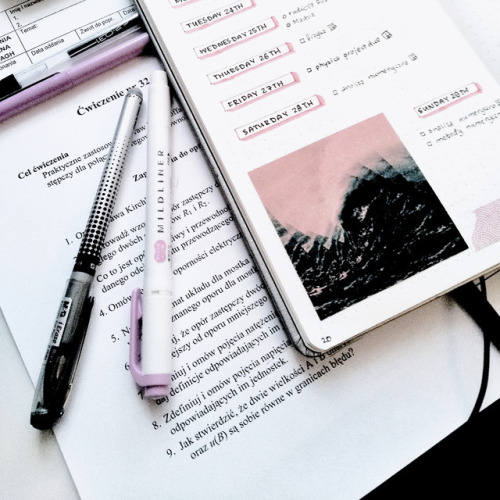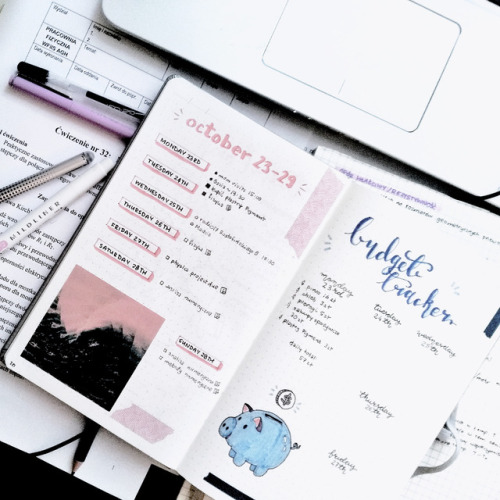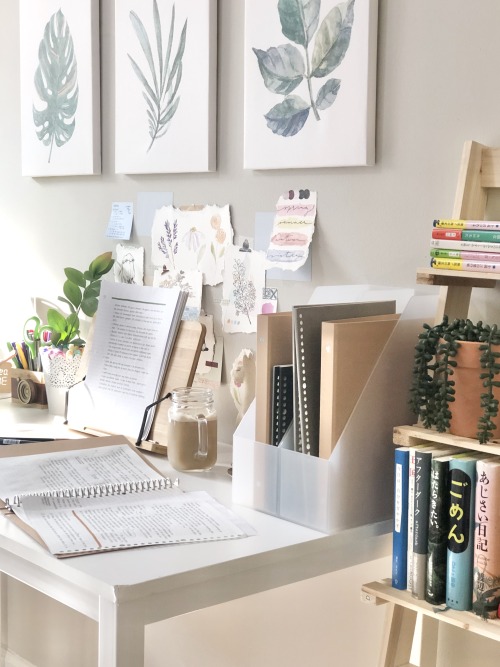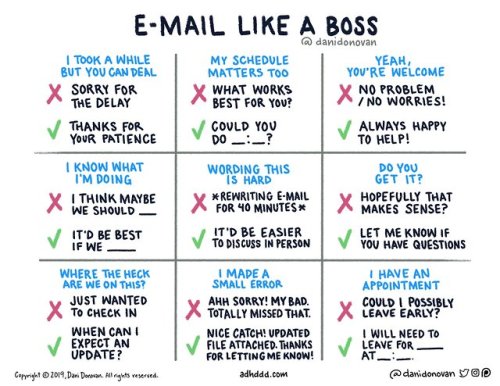23/100 Days Of Productivity ❇️ This Week’s Bujo Spread, With A Budget Tracker Because I Spend WAY


23/100 days of productivity ❇️ this week’s bujo spread, with a budget tracker because I spend WAY too much! Was doing physics again today (wow, what a surprise), but also went to a java class and numerical analysis lecture.
More Posts from Oliviasstudyblrshit and Others


🌸 my first time bullet journaling! This was done a while ago! Also this is my first post on tumblr💕 🌸
IG: @_akadanie


18.08.20 / the sun rising on my all-nighter. i’ve got a list of errands to run today but after today, everything should be ironed out. just need to get through today!! hbu? i hope you’re doing okay. take care ♡




Hope you have had a good day 💚🦋
Beginner Japanese Resources

I’ve seen quite a lot of these going around, and have definitely taken quite a few pages out of their books, but I thought I had some bookmarks I’d like everyone to know more about, even if they already did. ^^ If you think something is wrong, or know something is wrong, then please tell me!
g r a m m a r
Tae Kim’s Guide to Japanese Grammar (easy acquaintance with grammar, but not much in-depth)
IMABI (best free grammar resource but too much information for beginners, or so it’s said. still very helpful.)
Tim’s Takamatsu/ Tim Sensei’s Corner (also good. i heard of someone who printed out the older website and got fluent in Japanese with this, so it’s probably worth checking out)
Dictionaries of Japanese Grammar (hands down the best grammar resource, bit pricey or you could just download these PDFs).
Bunpro (good for interactive grammar studies, free until may 10 and there’s a one month free trial for subscription after that)
g r a m m a r / b l o g s
Japanese Ammo (native speaker and tutor’s blog, she also has a Youtube channel here)
Maggie-Sensei (grammar articles are a bit mismatched but good for little references)
Tofugu (probably the best culture and resources blog I’ve come across. a must.)
Romy-sensei (Japanese teacher, blog is VERY helpful)
DJT Guide (for a beginner outlook on how to start and where, named because of the daily japanese thread that I don’t have too much information on but it’s a daily thread where people learning japanese shared resources/ progress/ motivational whatevers)
i n t e r a c t i v e l e a r n i n g
Delvin Language (shows clips and asks you to identify what’s spoken. Very good for listening and you can slow them down, though use that sparingly. kinda spammy tho.)
Japanese Class (found this a few years ago, but it’s a gamified site that helps you learn vocabulary with regular exposure. recommended.)
Japanese in Anime and Manga (for fellow otakus. a bit hard for me to navigate, but it’s along a similar vein as the above site. offered in spanish, chinese, korean and french, besides english.)
Erin’s Challenge (recommended for upper beginners, or lower intermediates, but there’s a lot to do now as well! very good for listening and reading- with transcripts and subtitles- in the form of a school life role-play. offered in quite a few other languages.)
Duolingo (not a lot of information, nor is it very in-depth. good for dabbling in, maybe. try the website, not the app, if you really want to use it.)
LingoDeer (BEST app for learning the language. You could do a lot on it alone, and it can probably take you up to a little above N5, but don’t keep using it standalone for long! also offers chinese, korean and now vietnamese!)
t e x t b o o k s
TextFugu (tofugu’s online textbook, made specifically for self-study, though it works good in conjunction with classes and tuition)
Genki (widely used, most recommended by people)
Minna no Nihongo (also very popular. some consider it better than genki.)
Japanese for Busy People (especially if you’re a little short on time)
Japanese for Everyone (generally good reviews, with a lot of vocabulary - an estimated 2500 maybe? convert djvu to pdf to use.)
k a n j i (course books)
Kodansha Kanji Learner’s Course aka KKLC (a kanji learning course with vocabulary in it.)
Remembering the Kanji (aka the acclaimed ‘Japanese learner’s beginning holy grail’. but it totally depends upon what you’d prefer tbh. can make you recognise kanji and what they could stand for, but that’s about it.)
Kanji Damage (aka remember 1700 Kanji with offensive yo mama jokes. ridiculous? hilariously, it does work for some.)
WaniKani (people swear by this. you can try out the first three levels to see the magic, even if you don’t think it’s your style.)
l i s t e n i n g
mykikitori (for Genki 1 apparently)
Japanese Pod 101 (a good online course in itself, but the podcasts are the most helpful of the lot. @lovelybluepanda has made them available here.)
o t h e r s
DJT Resources (sub-link of DJT Guide but probably has all the Japanese resources you could ever want!)
Nihongo e Na (more resources, probably worth checking out)
Nihongo Resources (along a similar vein with the purpose in its name)
Jakka (the site is entirely in Japanese, but it has kanji for grade school, broken up appropriately)
Happy Lilac (kind of the same as above with kanji stroke order practice material, meant for Japanese children)
This may be repeated, because similar, if not the exact same, resources in DJT are categorised neatly here. @lovelybluepanda again.
check more masterposts, some of which have been compiled here by @languagesandshootingstars
日本語の森 (Nihongo no Mori) (Good Youtube videos for beginners and advanced learners alike! They even have their lessons separated by JLPT levels!)
While that’s it for all the Japanese resources I feel do not go around a lot now, I did compile some points Japanese beginners might be doubtful in and what I had found from my own research.
Genki or Minna no Nihongo?
Minna no Nihongo has more vocabulary (2100-2200 for 初級 levels i.e. the beginner books) while Genki boasts a little lesser (1700 for genki 1+2). Minna no Nihongo has allegedly more grammar coverage ( 〜ように、〜ために- used in native speech). However, the book is entirely in Japanese (there is a separate book for English explanations) and there is a separate book for Kanji too. The Answer Key is at the back of the book, unlike Genki which has a separate Answer Key.
Genki is said to be more beginner-friendly than Minna no Nihongo, but if you put your mind to it, you can do either tbh. Just choose any book and stick with it!
** If you’re planning to study in Japan anytime, remember that Japanese teachers usually use Minna no Nihongo. But better do your research as well.
Kanji?
Everyone can put in all the work they like in Kanji, but at the end of the day, Kanji is not the only thing about Japanese. You can totally use Anki or Quizlet or Memrise to drill it in, maybe even make your own flashcards and put in extra work! But to really get fluent in the language, talking to native speakers (helpful guide by @jibunstudies) is very important. Even if you don’t fully understand what they’re saying, you acquire more vocabulary and will get the nuance of basic sentences! And you get friends too, if you’re lucky!
Just for reference and no pressure, here’s the general requirement to pass JLPT levels, if you’re ever planning to take them!
Level Kanji Vocabulary Listening Hours of Study N5 ~100 ~800 Beginner 150 (estimated) N4 ~300 ~1,500 Basic 300 (estimated) N3 ~650 ~3,750 Lower Intermediate 450 (estimated) N2 ~1000 ~6,000 Intermediate 600 (estimated) N1 ~2000 ~10,000 Advanced 900 (estimated)
(… yeah, that looks way better on a computer ok.) Remember, estimated doesn’t mean it will take you that much time exactly. Everyone learns differently! And ‘talent’ can be overcome by enough hard work so ファイト!
頑張れ !


I’ve been working on being more conscious of how I write emails, and made this handy printable guide! I have a bad habit of overusing exclamation points, emojis, and qualifiers like “just” and “possibly” to sound extra-friendly and non-threatening in emails. (“Just wondering / just confirming / just checking / just making sure / just wanted to let you know”) You are allowed to take up space. Your voice deserves to be heard. Your opinions matter. You don’t need to apologize for existing or asking for what you need. You are not “bossy” or “bitchy” for not sounding like a pep-machine 24/7. If you act like a doormat, you better develop a taste for shoe leather. You have power too. Don’t be afraid to stand up for yourself— no one else is gonna do it for you.
Sorry to be a pain but I was wondering if you had any Japanese children’s book recommendations? I’m a beginner (just learned hiragana and katakana and only know very basic phrases and vocabulary) and I was also wondering if you had an advice on how to read them? For example as I am a very beginner beginner I won’t know many words so should I start but reading paragraph by paragraph and translating everything I don’t know? Thank you 💕
First of all, sorry for late reply! I was busy these past weeks, that I only opened Tumblr yesterday.
I recommend this site for the Japanese children’s book. Notice that I did not recommend you a particular book, because I believe that each children book gives joy, and I want you to enjoy reading each one of them (^o^)
For the reading part, I suggest you to know first the meaning of each word, before reading it by paragraph. In this way, not only you learn the meaning, but also understand the content of the story. Make a flash card (like Anki deck) so you can memorize easily each word you have to learn (^_-)
I hope I was able to help you @jupiturde!


don’t we love a hidden calendar?
Hangul Lesson 4: Some 받침 Rules
여러분 안녕! Hi again everyone! I got a request recently to do a lesson about 받침 rules, so here it is! For those who don’t know, 받침 refers to the ending consonants of a Korean syllable. I recommend that if you aren’t familiar with Hangul, that you check out my other Hangul lessons on my masterlist first before reading this one!
I made these charts because there are quite a few rules and irregularities about 받침. I also made a couple about consonant assimilation, which is basically how two or more consonants blend together/change to make a new sound. My lists are not exhaustive, but I think I included the most common rules.
Also! I recommend that if you want a more complete list that you check out Korean Wiki Project’s page about this! You’ll also notice that a lot of the examples I used are the same as the ones that they used, so I want to give credit where credit is due! I tried to include some common words that you might hear often, and it can also be difficult to think up of irregularities sometimes, so I just wanted to let you know why it seems like I copied and pasted a lot of the examples and I don’t wanna plagiarize lol. PLEASE go check their page out – it’s super helpful!




If you’re overwhelmed by these lists and a little worried about memorizing them, don’t worry about it :) Honestly, depending on how you learn best it might be most productive to just learn as you go and to listen closely to how native Koreans speak so you can pick up on those rules rather than forcing yourself to memorize them. That said, if you want clarification on how exactly things are pronounced, I hope these charts along with Korean Wiki’s website can help!
If you want to practice writing and reading Korean with others, join my Discord chat here and my Tumblr chat here!
Want to expand your Korean vocabulary and get closer to fluency? Get Drops Premium using my affiliate link!
If you would like to donate and support my studies, check out my Ko-Fi! Thank you for your generosity! See you next time! 다음에 봐요!
-
 amaleexo liked this · 3 years ago
amaleexo liked this · 3 years ago -
 study-hard-be-gay reblogged this · 3 years ago
study-hard-be-gay reblogged this · 3 years ago -
 forebarence reblogged this · 3 years ago
forebarence reblogged this · 3 years ago -
 malevm reblogged this · 3 years ago
malevm reblogged this · 3 years ago -
 thehistorygrad reblogged this · 3 years ago
thehistorygrad reblogged this · 3 years ago -
 shakespeareanqueer liked this · 3 years ago
shakespeareanqueer liked this · 3 years ago -
 oliviasstudyblrshit reblogged this · 3 years ago
oliviasstudyblrshit reblogged this · 3 years ago -
 obiiviousolivia liked this · 3 years ago
obiiviousolivia liked this · 3 years ago -
 sage-studies reblogged this · 3 years ago
sage-studies reblogged this · 3 years ago -
 afretful-future-traveler liked this · 3 years ago
afretful-future-traveler liked this · 3 years ago -
 secretthoughts-things liked this · 3 years ago
secretthoughts-things liked this · 3 years ago -
 textbooksanddaydreams reblogged this · 3 years ago
textbooksanddaydreams reblogged this · 3 years ago -
 a-r-t-e-m-i-s-i-a reblogged this · 3 years ago
a-r-t-e-m-i-s-i-a reblogged this · 3 years ago -
 idk-345 liked this · 3 years ago
idk-345 liked this · 3 years ago -
 sadlittletrees liked this · 3 years ago
sadlittletrees liked this · 3 years ago -
 life-is-a-grave liked this · 3 years ago
life-is-a-grave liked this · 3 years ago -
 clinquant-afternoon liked this · 3 years ago
clinquant-afternoon liked this · 3 years ago -
 rubyetadams liked this · 3 years ago
rubyetadams liked this · 3 years ago -
 famouspandapursestatesman liked this · 3 years ago
famouspandapursestatesman liked this · 3 years ago -
 17caratfover liked this · 3 years ago
17caratfover liked this · 3 years ago -
 likeshestoleit reblogged this · 3 years ago
likeshestoleit reblogged this · 3 years ago -
 savgogh reblogged this · 3 years ago
savgogh reblogged this · 3 years ago -
 evelynsproductivity liked this · 3 years ago
evelynsproductivity liked this · 3 years ago -
 mermaidstudiesart reblogged this · 3 years ago
mermaidstudiesart reblogged this · 3 years ago -
 mermaid1354 liked this · 3 years ago
mermaid1354 liked this · 3 years ago -
 pinkanonhopes liked this · 3 years ago
pinkanonhopes liked this · 3 years ago -
 tired-programmer liked this · 3 years ago
tired-programmer liked this · 3 years ago -
 audrelele liked this · 3 years ago
audrelele liked this · 3 years ago -
 savgogh liked this · 3 years ago
savgogh liked this · 3 years ago -
 bloodstarsinthedark liked this · 3 years ago
bloodstarsinthedark liked this · 3 years ago -
 abrazos-deluna liked this · 3 years ago
abrazos-deluna liked this · 3 years ago -
 siri-of-all-trades liked this · 3 years ago
siri-of-all-trades liked this · 3 years ago -
 stu-dna reblogged this · 3 years ago
stu-dna reblogged this · 3 years ago -
 captain42 liked this · 3 years ago
captain42 liked this · 3 years ago -
 elapim liked this · 3 years ago
elapim liked this · 3 years ago -
 kelstudy reblogged this · 3 years ago
kelstudy reblogged this · 3 years ago -
 silviyr liked this · 3 years ago
silviyr liked this · 3 years ago -
 study-bisch reblogged this · 3 years ago
study-bisch reblogged this · 3 years ago -
 etawardana liked this · 3 years ago
etawardana liked this · 3 years ago -
 justmebeingme-stuff liked this · 3 years ago
justmebeingme-stuff liked this · 3 years ago -
 craywolnation liked this · 3 years ago
craywolnation liked this · 3 years ago -
 starlight-n-cats liked this · 3 years ago
starlight-n-cats liked this · 3 years ago -
 nefelibatastudy liked this · 3 years ago
nefelibatastudy liked this · 3 years ago -
 lara86nsk liked this · 3 years ago
lara86nsk liked this · 3 years ago -
 daughterofties liked this · 3 years ago
daughterofties liked this · 3 years ago




